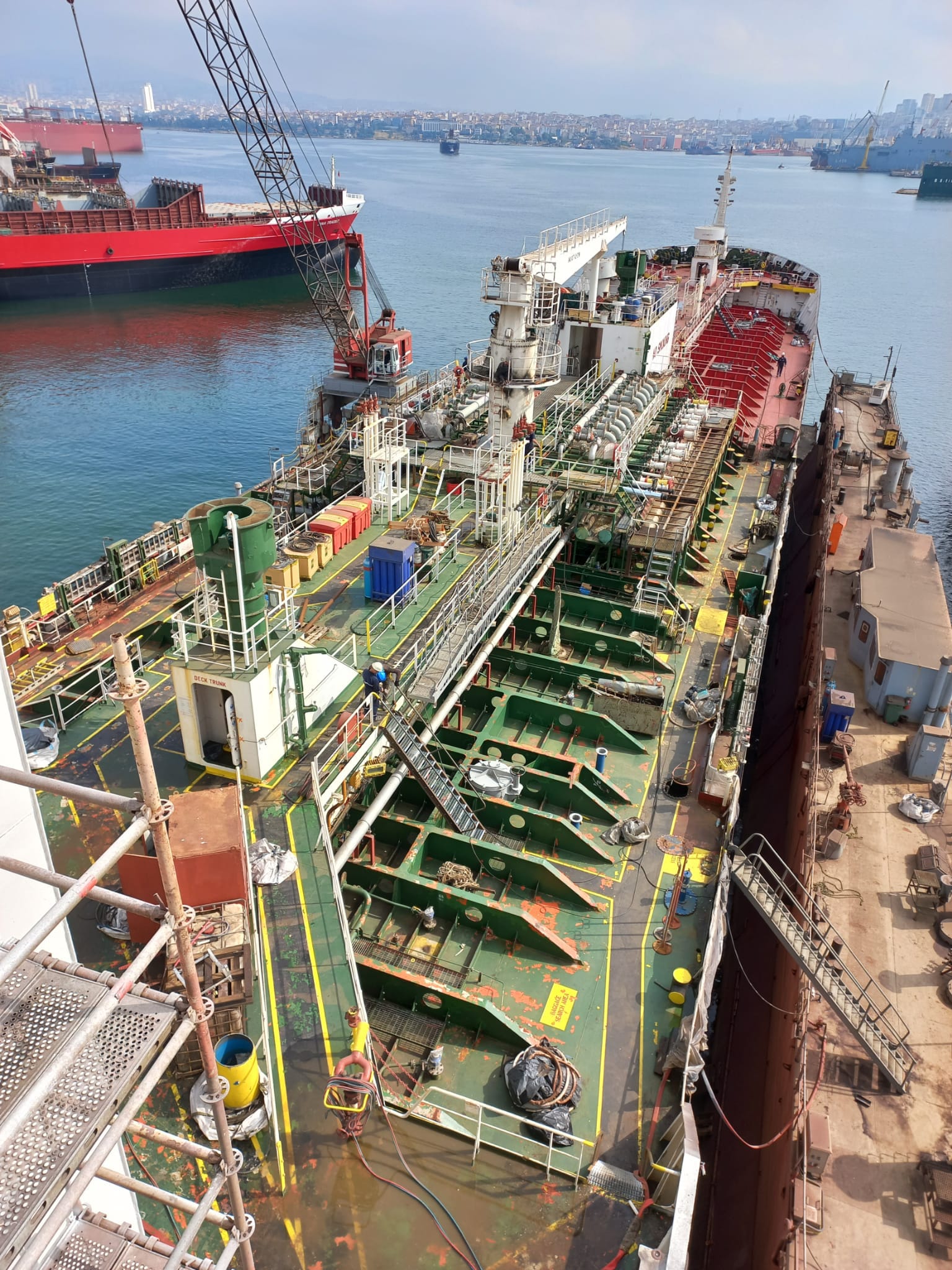Revitalizing Maritime Giants: Vessel Deck Restoration and Marine Repair Practices
An In-Depth Look at Structural Overhauls and Maintenance Strategies for Seagoing Vessels
Surface preparation is equally critical—grit-blasting is typically used to remove residual rust and scaling before applying marine-grade coatings. This ensures long-term corrosion resistance and structural durability. Welding operations on deck surfaces are usually supervised by certified technicians to maintain integrity under stress and heavy loads. Scaffolding and access platforms are temporarily installed for safe, multi-point access. Following steel renewal, advanced sealing systems are applied around cargo hatches, tank lids, and deck machinery foundations. Heavy-duty epoxy and polyurethane sealants are standard in these zones. Specialized equipment like hydraulic cranes and mobile welding units are deployed throughout the process for both efficiency and safety. Throughout the deck’s revamp, precision measurements with laser levels and ultrasonic thickness gauges ensure structural alignment and load-bearing reliability. Moreover, the logistics of dock scheduling and weather contingency play a large role in keeping deadlines tight yet flexible. Regular quality assurance checks, including non-destructive testing (NDT), are performed to validate the welds and steel quality. All these coordinated efforts restore the vessel’s operational integrity while extending its lifespan significantly.
Beyond deck renewal, comprehensive repair campaigns often include ancillary vessel systems located on or adjacent to the deck surface. This includes the overhaul or replacement of pipe networks responsible for fuel, ballast, and fire suppression lines. Marine plumbers and pipefitters examine each segment, using hydrostatic testing and ultrasonic scanning to identify weak spots or corrosion clusters. If necessary, pipe sections are hot-worked and fabricated on-site to match the system’s original specifications. Hydraulic systems, particularly those controlling cargo cranes or winches, undergo functional testing and fluid analysis to detect leaks or pressure inconsistencies. In addition to mechanical systems, electrical routing and lighting arrays are re-evaluated, as exposure to salt spray and vibration can degrade insulation and fittings over time. Lighting enclosures and cabling are replaced with IP-rated, marine-grade alternatives to prevent future downtime. Ventilation and drainage are also overhauled by cleaning and sometimes re-routing scuppers, gutters, and vent ducts for better flow and reduced stagnation. These operations are completed in tandem with hull integrity assessments—especially around the waterline—where divers or remotely operated vehicles (ROVs) perform visual inspections for cracks or deformation. This comprehensive scope makes sure that both deck hardware and hidden subsystems function in harmony. Every step of the process must comply with class society standards like those issued by DNV, Lloyd’s Register, or Bureau Veritas. Routine documentation and progress tracking are maintained to ensure transparency with both stakeholders and classification bodies. By synchronizing surface work with systemic improvements, the vessel is not just repaired—it’s holistically rejuvenated for long-term voyages.
In the final stages of restoration, attention turns to coatings, surface treatments, and operational revalidation. After all structural and mechanical work is complete, the deck area is typically primed and painted using marine epoxy or polyurethane coatings tailored for high UV and salt resistance. Non-slip deck coverings are applied in high-traffic areas, often with color-coded safety zoning to guide crew movements. Special anti-skid materials—such as aluminum oxide grits—are embedded into wet coatings for traction. Areas like mooring stations, cargo zones, and walkways receive stenciled safety markings and hazard indicators. Simultaneously, all replaced equipment is subjected to operational trials, such as load tests for cranes and winches, pressure runs for pipelines, and continuity tests for wiring. During sea trials, deck machinery, navigation lights, and control interfaces are calibrated and double-checked under real operational conditions. Technical teams work closely with the vessel’s crew during this phase to fine-tune systems for comfort, efficiency, and compliance. Environmental systems such as oil-water separators and sewage handling are inspected to ensure eco-compliance. Once all systems have passed final inspections, documentation is compiled and submitted for flag state approval. From here, the vessel returns to its full commercial mission—whether carrying bulk cargo, hosting offshore platforms, or conducting research missions—with renewed capabilities and resilience. The transformation is a testament to industrial coordination, skilled craftsmanship, and the enduring role of maritime engineering in global trade.







































































































































